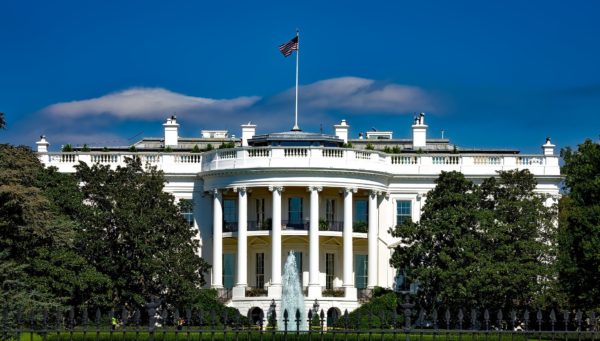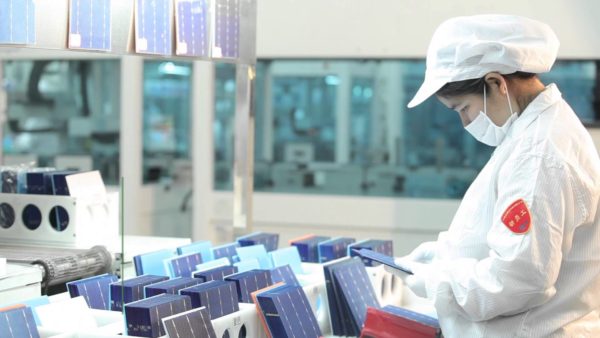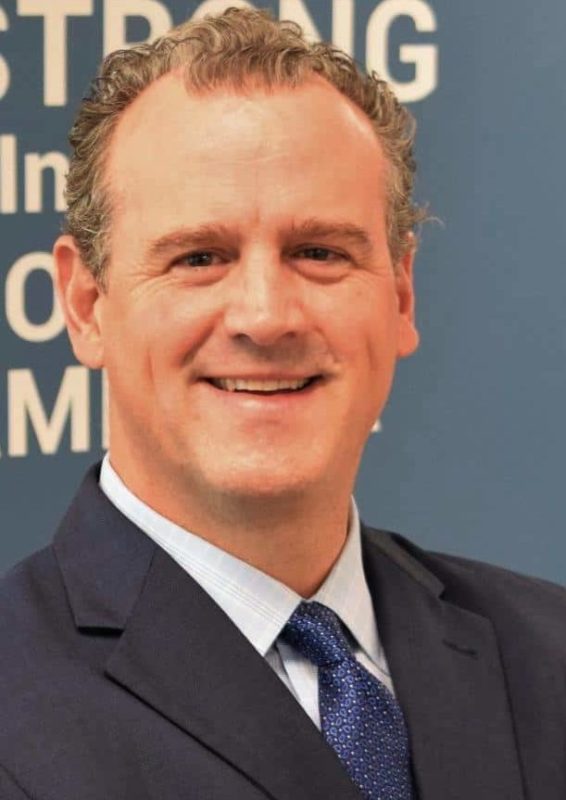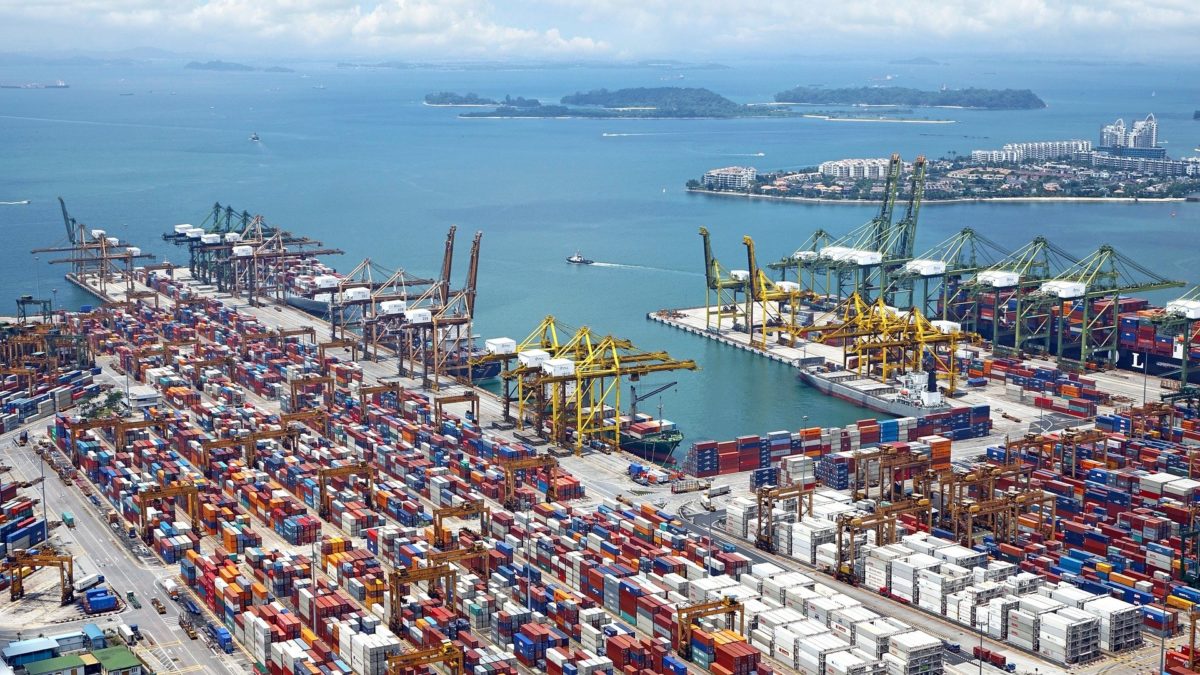Hanwha Q CELLS USA, Inc., LG Electronics USA, Inc., and Mission Solar Energy are the latest companies to ask the International Trade Commission (ITC) to extend import tariffs on crystalline silicon photovoltaic (CSPV) cells.
The petition was made under Section 204(c) of the Trade Act of 1974 and Subpart F of part 206 of the rules of practice and procedure of the ITC. The companies said that they are representatives of the domestic industry producing CSPV cells and modules and, therefore, have standing to file the petition.
Days earlier, Auxin Solar and Suniva formally asked the ITC to extend solar tariffs for four more years.

Image: Pixabay
“Extending this safeguard is essential for America to reclaim its lead in solar energy manufacturing and development, and it represents a critical step to achieve the broader goal of American renewable energy independence,” said Mamun Rashid, co-founder and chief executive officer at Auxin Solar. Rashid said that Auxin “is committed to re-shoring the solar supply chain” and filed the petition hoping that policymakers are “committed to the promise of green energy independence and the good-paying manufacturing jobs that will result.”
Auxin Solar said that its extension petition will prompt the ITC to determine whether the safeguard remedy continues to be necessary and whether evidence exists that the industry is making a positive adjustment to import competition. The ITC is expected to report its determination to President Biden by December 8.
Need more time
In their separate 420-page filing on August 4, Hanwha Q CELLS USA, LG Electronics USA, and Mission Solar Energy said they had “not yet received the full benefit intended” by tariffs, which were put in place in 2018 and are set to expire in February 2022. The companies said they need more time to “complete their adjustment” to facilitate the domestic module production that they called “critical” to the Biden administration’s aim to make the energy sector carbon-free by 2035.

Image: JinkoSolar
The remedy that the domestic industry received through the tariffs was “partially impaired” by what they said was import stockpiling before the tariffs took effect, the economic impact of the Covid-19 pandemic, continued import underselling, and increased costs and tariffs on the inputs used to produce modules.
The companies also said the tariff’s overall effectiveness was “significantly limited” by the exclusion of bifacial products. This allegedly “opened the gates for the return of high import volumes of duty-free, low priced modules” only months after new CSPV module plants started production.
The current tariff rate quota of 2.5 GW per year, which they said was “adequate” during the first three years the tariff was in effect, will need to be adjusted in the future, said the three companies. They said an “adequate” quotient in line with domestic module production would be “essential to the module producers’ viability” and prospects for new investments in CSPV module manufacturing.
SEIA opposition
In an interview with pv magazine, John Smirnow, general counsel and vice president of market strategy for the Solar Energy Industries Association (SEIA), said the trade group remains opposed to tariffs. He cited numbers that SEIA presented to the ITC as part of its mid-term review of the tariffs, which showed around 2 GW less solar being developed than was forecast prior to the tariffs.

He said that claims that the tariffs would lead to the creation of 45,000 jobs were “wildly, comically off.” He pegged the actual number of new jobs created as a result of the tariffs at no more than 2,000 through expansion at “three modest facilities.”
Smirnow said that the tariffs hurt overall solar sector growth and are not an effective incentive to spur new manufacturing investment. He said that business investments rely on a five- to 10-year time horizon and not on a four-year window of opportunity.
He called for a suite of federal manufacturing supports to help support domestic production. That suite would include long-term extension of the Investment Tax Credit and addition of a direct pay mechanism to bolster demand certainty. It also would include investment in capital expenditures to help the U.S. compete in global markets for investment dollars. He said that low-cost loans and use of manufacturing tax credit are useful tools for that purpose.
And Smirnow called for long-term domestic production support to bring more parts of the solar supply chain to the U.S. He said that U.S. production of everything from glass to junction boxes to inverters could be catalyzed by a manufacturing tax credit similar to one proposed by Senator Jon Ossoff (D-GA).
Smirnow warned that “billions of dollars” worth of contracts are being written with the expectation that the tariffs will expire at midnight on February 6. He said that project delays and cancellations likely could result if the tariffs are extended.
Ongoing health?
In their ITC petition, Hanwha Q CELLS USA, LG Electronics USA, and Mission Solar Energy said that extending the tariffs for another four years “at the highest possible” duty rates is “essential to the continued health and viability of U.S. manufacturers.”
They said that if the tariffs are left to expire, “all members of the newly revitalized U.S. industry would be exposed to a new wave of injurious imports.” Without an extension, they said that planned investments in equipment and workforce, new capacity expansions and product innovation will “have to be put on hold or may never come to fruition.”
This content is protected by copyright and may not be reused. If you want to cooperate with us and would like to reuse some of our content, please contact: editors@pv-magazine.com.









By submitting this form you agree to pv magazine using your data for the purposes of publishing your comment.
Your personal data will only be disclosed or otherwise transmitted to third parties for the purposes of spam filtering or if this is necessary for technical maintenance of the website. Any other transfer to third parties will not take place unless this is justified on the basis of applicable data protection regulations or if pv magazine is legally obliged to do so.
You may revoke this consent at any time with effect for the future, in which case your personal data will be deleted immediately. Otherwise, your data will be deleted if pv magazine has processed your request or the purpose of data storage is fulfilled.
Further information on data privacy can be found in our Data Protection Policy.